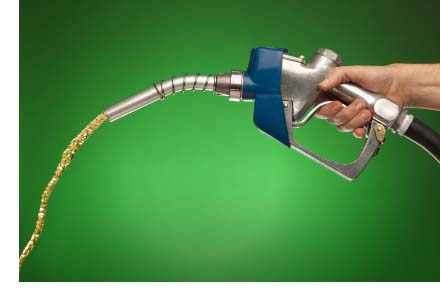 Cash-strapped motorists are being offered cut-price green driving lessons that can save up to £300 a year on fuel.
Cash-strapped motorists are being offered cut-price green driving lessons that can save up to £300 a year on fuel.
In an effort to encourage drivers to follow 10 top Fuel Efficient Driving (FED) techniques, the Energy Saving Trust is providing training sessions to Scottish motorists for only £12 for a 50-minute session with an approved driving instructor. Those interested in the reduced price lessons should ring 0800 512 012.
A spokesperson for the Environmental Transport Association (ETA) said: “Green driving techniques save money at the pump, but a smoother and relaxed style of driving is safer for other road users, too.”
For motorists who are unable to take advantage of the cut price lessons, the techniques have been distilled into the following ten tips:
| Fuel efficient driving | Top ten tips |
|---|---|
| Shift to a higher gear as soon as possible | Driving at lower engine speeds reduces fuel consumption. Change up between 2,000 and 2,500 rpm. |
| Anticipate road conditions and drive more smoothly | Rather than last minute braking, decelerate smoothly by easing off on the accelerator as early as possible. This allows the car to decelerate using engine braking. With the car in gear and the accelerator released, a modern car can use very little fuel. |
| Maintain a steady speed in as high a gear as possible | Driving at a steady speed requires little effort for the engine. Avoiding unnecessary acceleration and heavy braking helps reduce your fuel consumption. |
| Drive a little slower | Stick to the speed limits and make your fuel go further. For most cars the most efficient speed is 45-50 mph. The faster you go above this, the more fuel you will use. Driving at 50mph rather than 70mph reduces your fuel consumption by 10 per cent at a stroke. |
| Switch off if you’re stationary for more than a minute | When stuck in traffic or waiting for someone, switch off your engine. Switching off whenever it’s safe to do so can soon lead to significant savings |
| Keep your tyres properly inflated | Under-inflated tyres not only lead to poor road holding but also cause excessive drag and resistance, increasing fuel consumption. Both over and under-inflated tyres can be dangerous to road holding, so make sure your tyres are at their recommended pressure |
| Switch off air conditioning | Use air conditioning sparingly as your engine has to work harder to power the air conditioning machinery. If driving at low speed, open the window instead |
| Close your windows if travelling at 50mph or more | The aerodynamic drag on your car of an open window at speeds of 50mph or more adds to your fuel usage. Keep your windows closed at high speeds. |
| Remove roof boxes and racks if not being used | Car designers try hard to make their vehicles as aerodynamic as possible. Adding a roof box or rack spoils this by increasing drag on your car, making your engine work harder and increases fuel usage |
| Remove unnecessary items | Carrying excess weight in a vehicle increases fuel consumption. Heavy or large items, such as tool kits and golf clubs should be removed when not required. |
Hypermiling
In the face of high petrol prices, a craze for extreme fuel efficient driving known as hypermiling has become a craze in America over the last few years.
As can be seen from the list of tips above, most fuel efficient driving techniques are little more than common sense – journey planning, ensuring that tyres are properly inflated and not carrying unnecessary weight are among the most obvious. But some of the more extreme hypermiling techniques are illegal and dangerous. A minority of drivers who practice ‘hypermiling’ in America over-inflate tyres, refuse to come to a halt at stop signs and slipstream large vehicles in a bid to reduce fuel consumption.
0 Comments View now